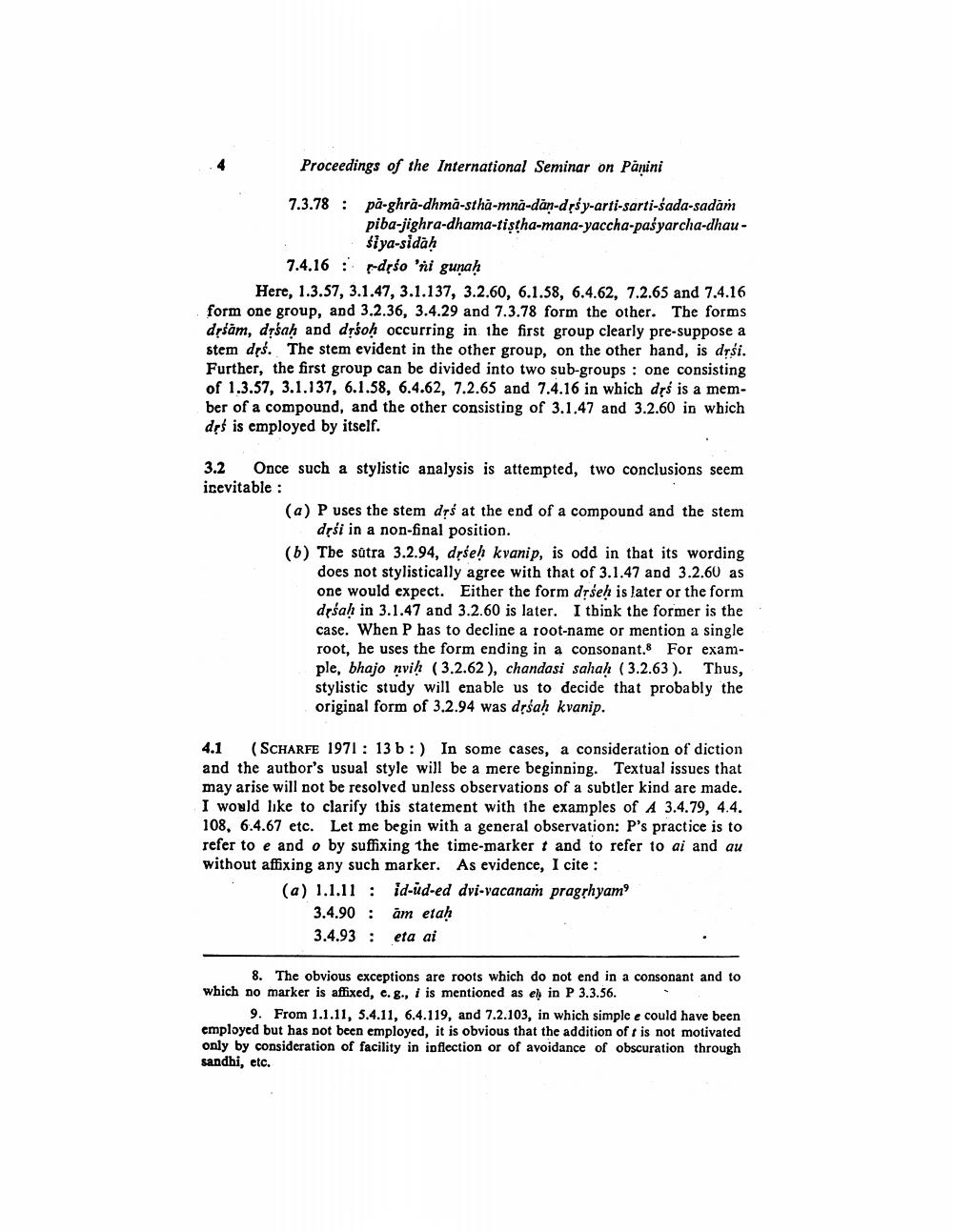________________
Proceedings of the International Seminar on Panini
7.3.78: pā-ghrà-dhma-stha-mna-dan-dršy-arti-sarti-sada-sadam
piba-jighra-dhama-tistha-mana-yaccha-pasyarcha-dhau
siya-sidah 7.4.16 : rdso 'ni gunah
Here, 1.3.57, 3.1.47, 3.1.137, 3.2.60, 6.1.58, 6.4.62, 7.2.65 and 7.4.16 form one group, and 3.2.36, 3.4.29 and 7.3.78 form the other. The forms dịšām, dịšah and drśoh occurring in the first group clearly pre-suppose a stem drs. The stem evident in the other group, on the other hand, is drsi. Further, the first group can be divided into two sub-groups : one consisting of 1.3.57, 3.1.137, 6.1.58, 6.4.62, 7.2.65 and 7.4.16 in which dró is a member of a compound, and the other consisting of 3.1.47 and 3.2.60 in which drs is employed by itself.
3.2 Once such a stylistic analysis is attempted, two conclusions seem icevitable :
(a) P uses the stem dss at the end of a compound and the stem
drsi in a non-final position. (b) Tbe sutra 3.2.94, drseh kvanip, is odd in that its wording
does not stylistically agree with that of 3.1.47 and 3.2.60 as one would expect. Either the form drseh is later or the form dršah in 3.1.47 and 3.2.60 is later. I think the former is the case. When P has to decline a root-name or mention a single root, he uses the form ending in a consonant. For example, bhajo nvih (3.2.62), chandasi sahah (3.2.63 ). Thus, stylistic study will enable us to decide that probably the original form of 3.2.94 was drśah kvanip.
4.1 (SCHARFE 1971 : 13 b :) In some cases, a consideration of diction and the author's usual style will be a mere beginning. Textual issues that may arise will not be resolved unless observations of a subtler kind are made. I would like to clarify this statement with the examples of A 3.4.79, 4.4. 108, 6.4.67 etc. Let me begin with a general observation: P's practice is to refer to e and o by suffixing the time-marker t and to refer to ai and au without affixing any such marker. As evidence, I cite :
(a) 1.1.11 : id-ud-ed dvi-vacanam pragrhyam
3.4.90 : am etah 3.4.93 : eta ai
8. The obvious exceptions are roots which do not end in a consonant and to which no marker is affixed, e.g., i is mentioned as el in P 3.3.56.
9. From 1.1.11, 5.4.11, 6.4.119, and 7.2.103, in which simple e could have been employed but has not been employed, it is obvious that the addition of r is not motivated only by consideration of facility in inflection or of avoidance of obscuration through sandhi, etc.




